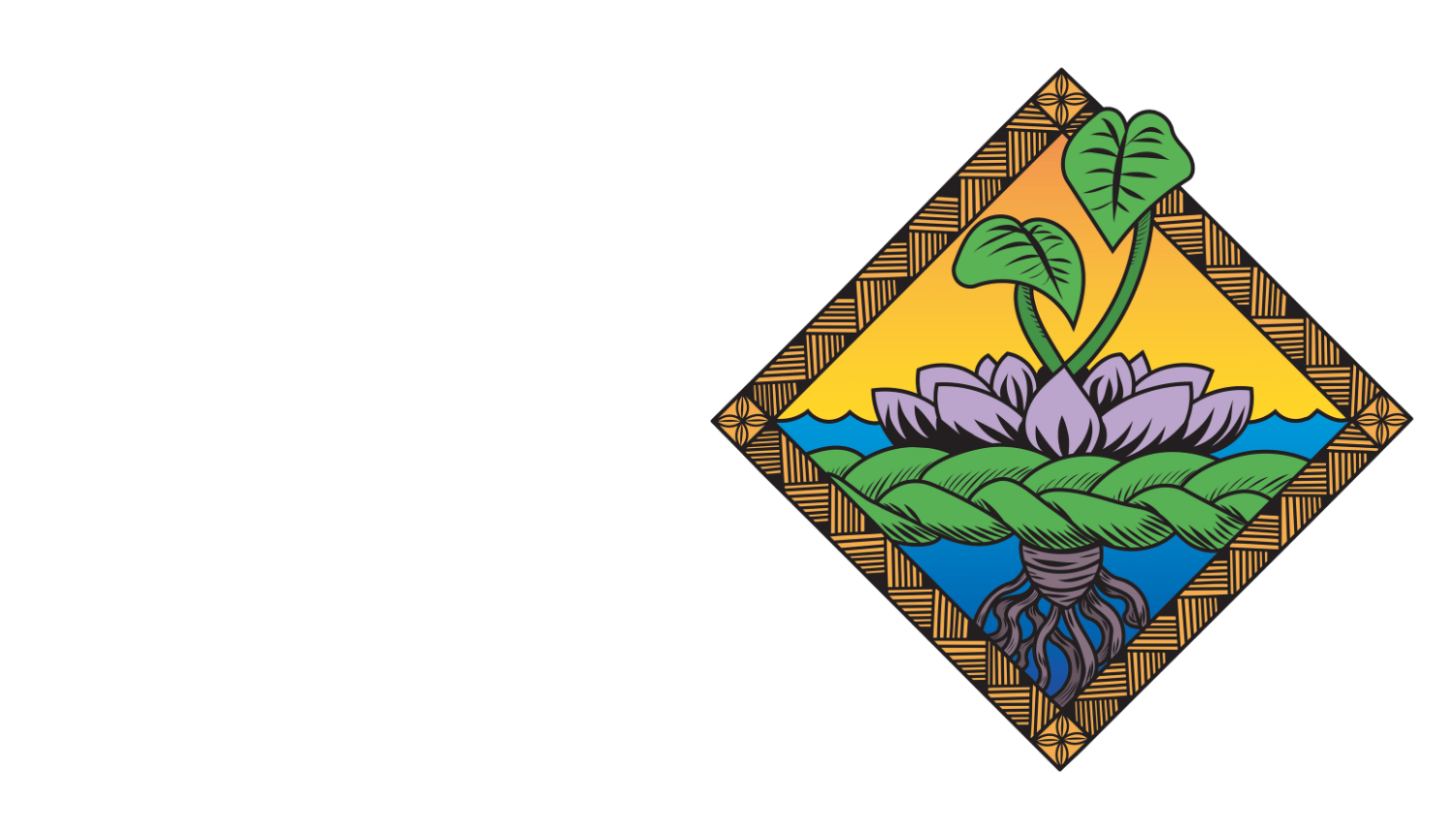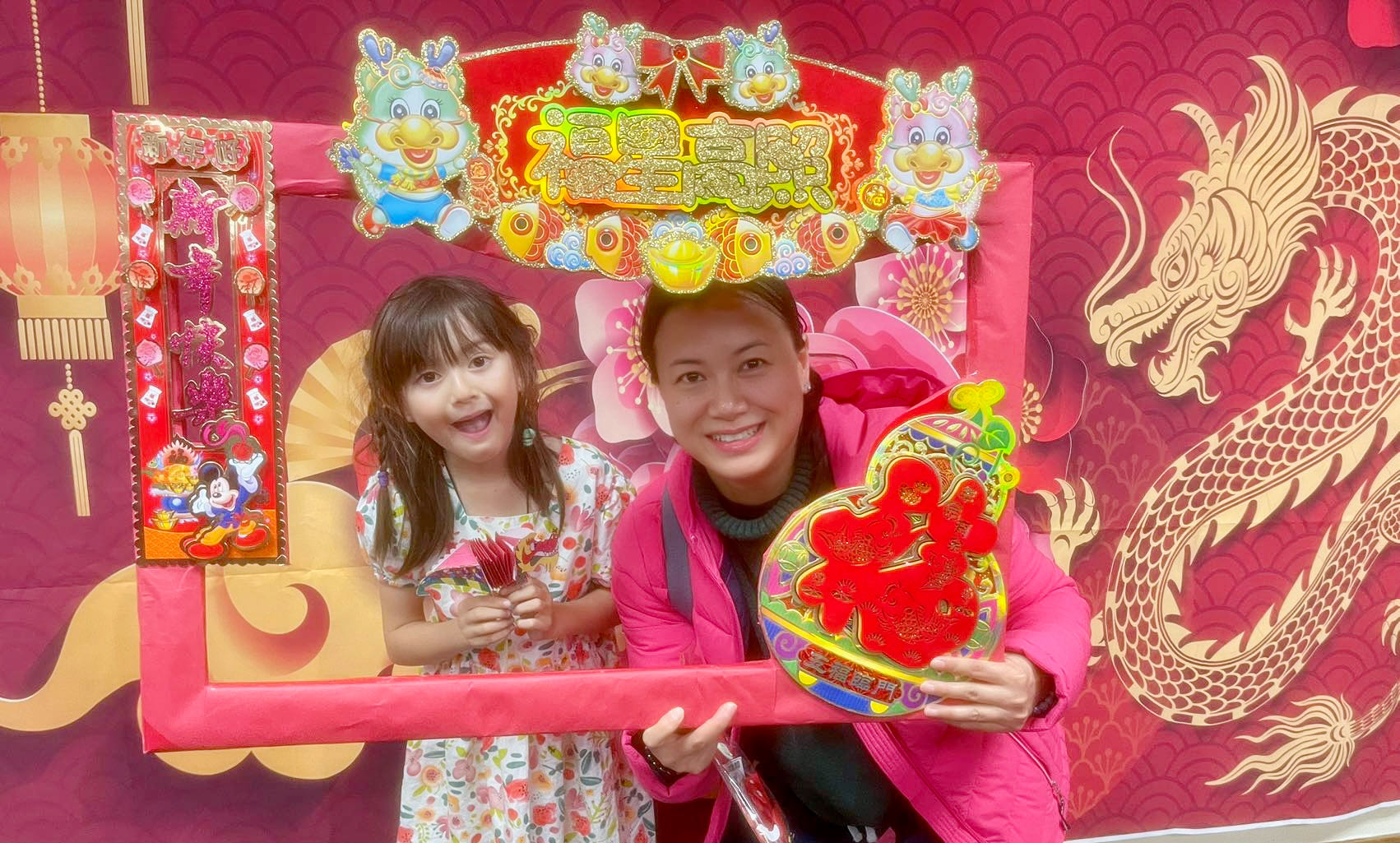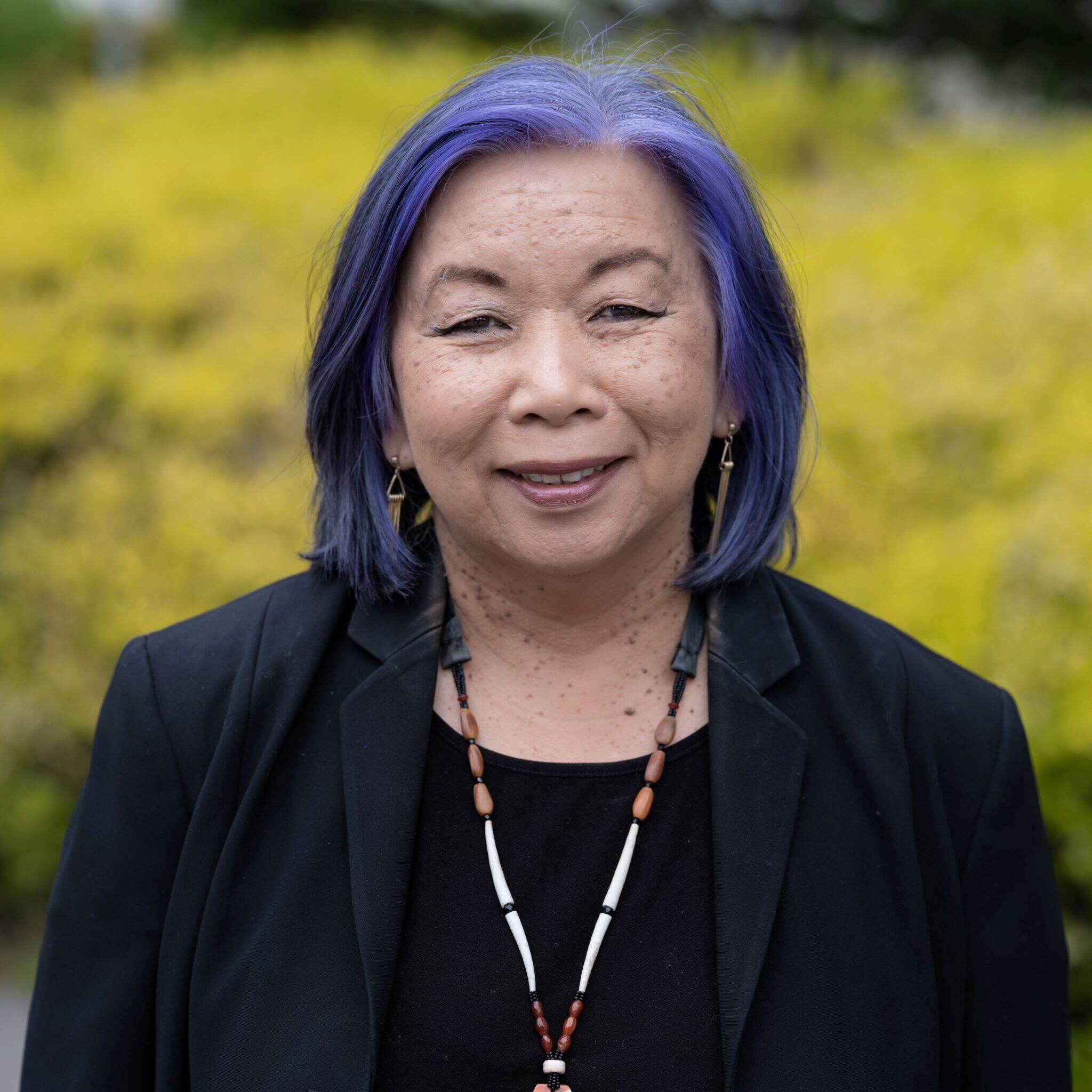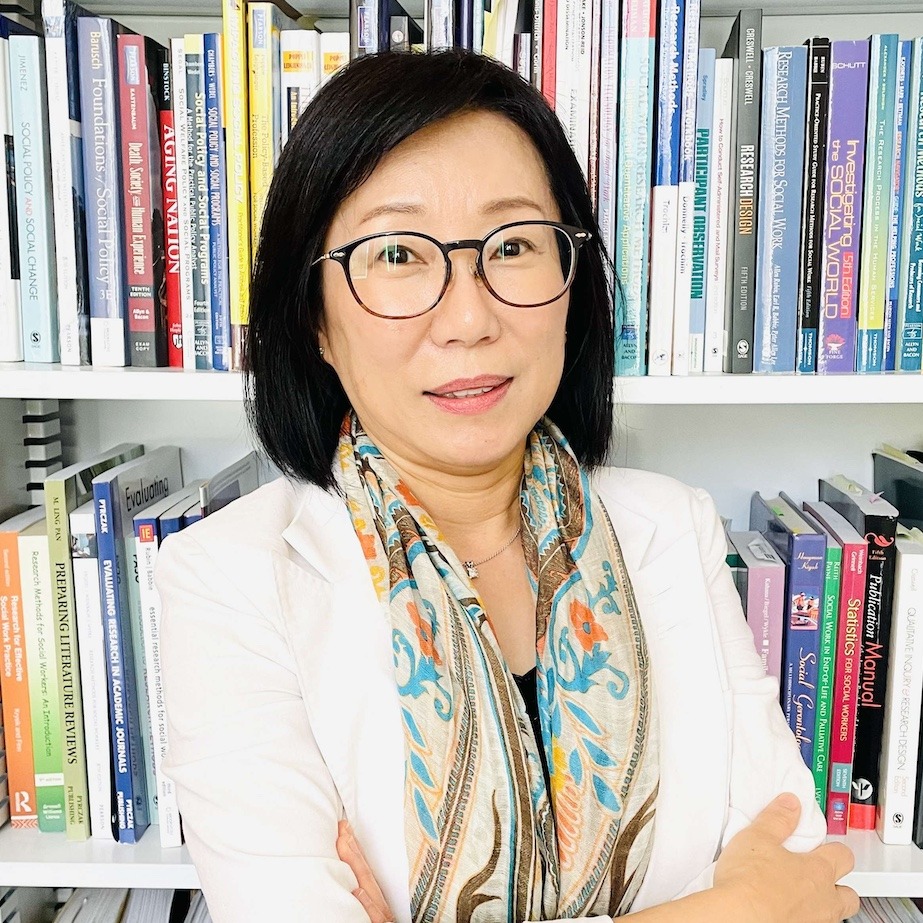Lunar New Year is a diverse and beautiful holiday that is celebrated among many Asian cultures and families. In celebration of Lunar New Year, the team at the AANHPI ‘Ohana Center of Excellence has several stories of the significance of Lunar Near Year, and how we each celebrate this time of year.
On Feb 3rd, from 6-8 p.m, at Milpitas Civic Center Plaza, the local communities celebrated the Lunar New Year with live performances by the Aimusic School, VietYouth, Cantrelle’s Martial Arts, and Tina Dance School. The local communities were immersed in the festivity during this two-hour cultural feast. We enjoyed songs in ethnic languages and the music played with traditional musical instruments. The kids were happily engaged in creative crafts including making a dragon and calligraphy (see the picture of the word Dragon written in calligraphy by my 6-years old daughter). It was a great opportunity to inspire her to learn Chinese words and Chinese culture.
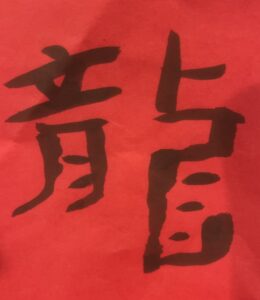
The lion and dragon dances were the highlights of the joyful event (see the video), which ended with a thrilling round of firecrackers. The firecrackers reminded me of all the Lunar New Year holidays that I spent in China before I came to the U.S. Many years ago, before the ban on firecrackers due to air pollution, almost every house in China lit firecracker on New Year’s Eve, while the family members get together to enjoy delicious traditional food and toast for a new year!
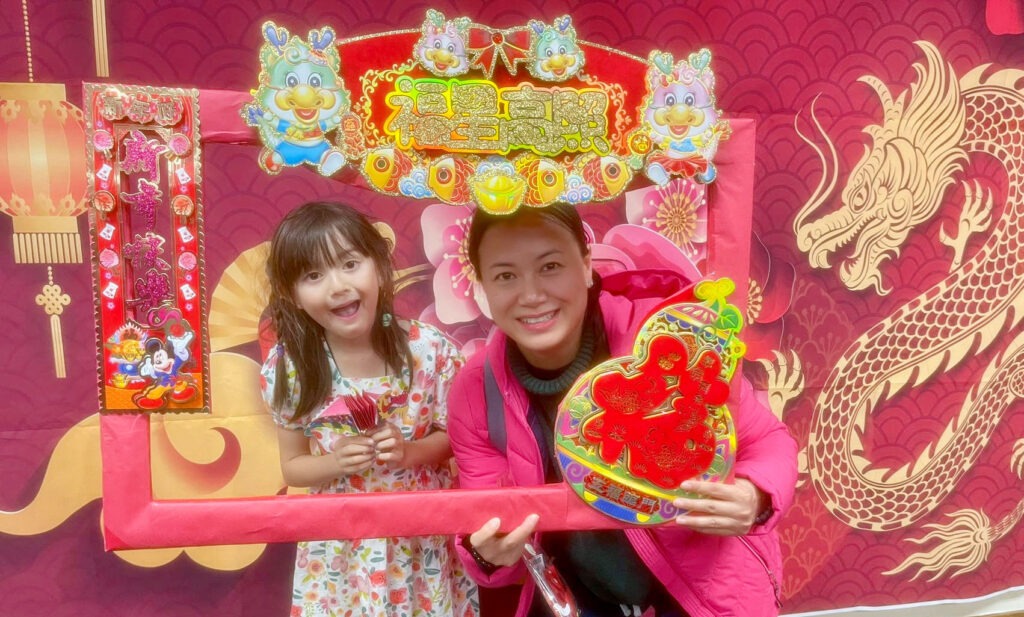
Now let me make a toast to you: wish you a happy new year of Dragon, be as energetic as a dragon, and everything goes well for you. But don’t drink too much at parties. 😊 祝大家龙年,龙虎精神,万事兴“龙”!聚会时请不要贪杯哦。
Final appreciation to all the volunteers, community members, and local governments that made this event with free admission for all the communities happen. Thank you and happy new year!
The first day of the Asian Lunar New Year in 2024 is February 10, 2024. For many Asian families around the globe, New Year’s Eve, is the most important night with a tradition of gathering for a special dinner with family and preparing specific traditional foods. Many of the traditions have a spiritual aspect with a recognition of connection to ancestors, the elderly, and a celebration of children. This year New Year’s Eve is February 9th. The celebrations will continue for 15 days with visits to family and friends and the exchange of gifts of food and fruit along with red envelopes of lucky money for children. In my family, we spend days preparing food for New Year’s Eve dinner and buy gifts of food, plants, and lucky peach and plum blossom branches for neighbors and friends to be shared in the coming 15 days. We also clean our homes and family shrines to welcome the new year in good luck, health, and fortune. It is a time of renewal, a connection to the past and to the future.
Kyoung Mi Choi is a Professor in the Department of Counselor Education at San José State University, Program Specialist at the AANHPI ‘Ohana Center of Excellence. She is a regularly contributor to Psychology Today, Courageously and Boldly.
Memories of Seollal, Korean Lunar New Year
Having grown up in South Korea, I enjoyed the excitement surrounding the Lunar New Year, also known as Gujeong (구정) or Seollal (설날). Although I didn’t fully understand why we celebrated twice – once on the first day of January based on the solar calendar and again on the first day of the lunar calendar, which changes each year, I have fond memories of all the delicious dishes we had, such as Tteokguk (떡국, rice cake soup, a popular holiday dish symbolizing the gaining of a year in age), Jeon (전, savory pancakes), mandu (만두, dumplings), Japchae (잡채, a stir-fried dish made with glass noodles), and Bulgogi (불고기, thinly sliced marinated beef).
Family gatherings were filled with laughter and traditional games like Yutnori (윷놀이, a board game played with sticks). For children, it was common to wear traditional Korean clothing (한복, Hanbok) and fly kites (연날리기) with other kids in the neighborhood in the crispy cold air.
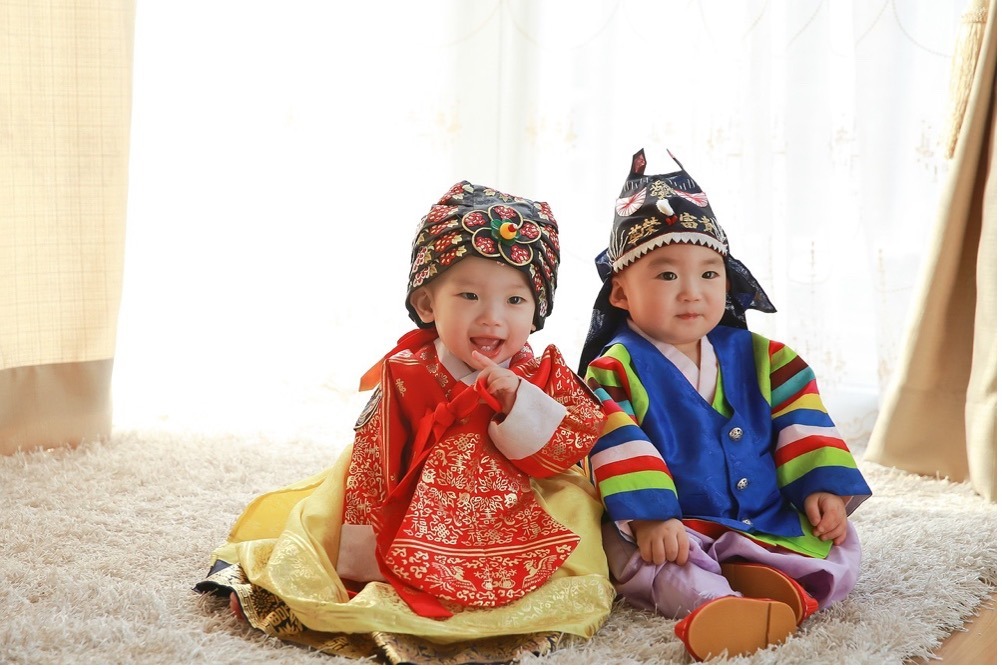
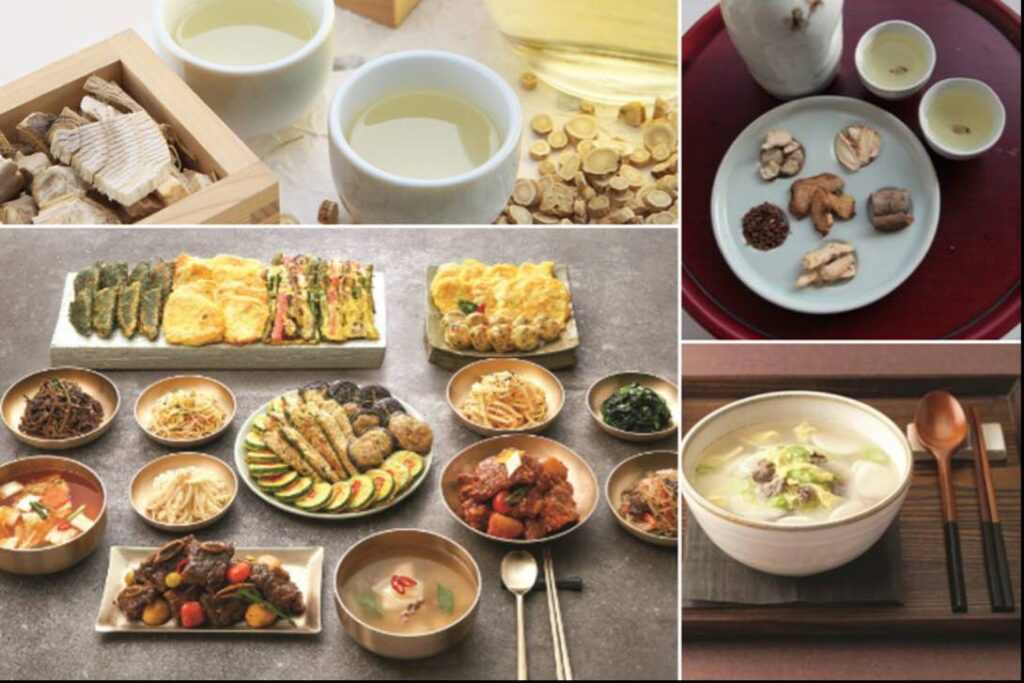
During Seollal, we observed the special traditional bowing ceremony called Sebae (세배), where younger family members bow to their elders as a sign of respect and to receive blessings for the new year. In return, elders give blessings and money to the younger generation. I often saved the money, Sebaedone (세벳돈), received during Sebae to buy school supplies and books I desired but couldn’t afford.
Since immigrating to the United States over 20 years ago, I’ve sought to maintain my cultural connections and traditions, much like many other Korean Americans. Celebrating Seollal allows me to gather with Asian and Asian American friends and families, sharing our ancestral foods and reflecting on our immigration journeys. This sense of community and belonging is palpable among many Asian American friends and families.
I discovered that the Bay Area hosts numerous cultural events and community celebrations, providing opportunities to reconnect with my childhood memories and cultural identity. If you’re in the Bay Area, I invite you to join me in celebrating this special month with our families, friends, and communities as we honor our diverse traditions and heritages.
Here are some events you might consider attending:
- Korea’s Lunar New Year Fest in SF, San Francisco, February 9
- Lunar New Year Celebration – Palo Alto, February 10
- Choy Sun Doe – San Francisco, February 10
- Jack London Square Lunar New Year Celebration – Oakland, February 10
- Santana Row Lunar New Year Celebrations – San Jose, February 10
- Dragon Dance – Fremont, February 10
- Lunar New Year Storytime – Redwood Shores, February 10
- Lunar New Year Celebration With Urisawe – Foster City, February 11
- Lunar New Year Celebration – Berkeley, February 11
- Lunar New Year Celebration – San Francisco, February 11
- San Jose Lunar New Year-Tet & Moon Festival – San Jose, February 16-17
- Millbrae Lunar New Year Festival – Millbrae, February 17
- Lunar New Year at OMCA – Oakland, February 17-18
- Lunar New Year at SJMA – San Jose, February 17
- San Francisco Symphony Presents Lunar New Year – San Francisco, February 17
- MCCA Chinese New Year Dinner – San Rafael, February 17
- Lunar New Year Celebration – Emeryville, February 18
- Lunar New Year Celebration – San Ramon, February 18
- Lunar New Year Celebration – Concord, February 18
- Lunar New Year Festival at Bay Area Discovery Museum – Sausalito, February 19
- Dragon Puppet Making – Palo Alto, February 20
- Community Street Fair – San Francisco, February 24-25
- Lunar New Year Celebration – Redwood City, February 24
- Lantern Festival – Oakland, February 24-25
- Chinese New Year Parade – San Francisco, February 24
- Lunar New Year 5K/10K Run/Walk – San Francisco, March 3
The Lunar New Year is a significant celebration that holds a special place in the cultural heritage of various Asian communities, such as Chinese, Korean, Japanese, Vietnamese, Taiwanese, Mongolian, Malaysian, Indonesian, Singaporean, and more. This vibrant festivity is based on the lunar calendar and begins with the first new moon and ends on the first full moon. It symbolizes the start of a new year filled with good fortune and happiness.
This year, 2024, marks the Year of the Wood Dragon that symbolizes strength and the fulfillment of aspirations. The celebration begins on February 9th, and it is a time of cultural reflection and festivity (source).
The Lunar New Year is celebrated in various communities throughout the United States, particularly among Asian American communities. According to a Pew Research Center study, around two-thirds of Chinese, Korean, Japanese, and Vietnamese Americans participate in Lunar New Year festivities (source).
Although not an official federal holiday in the United States, the Lunar New Year is gaining recognition. This is exemplified by California’s recent acknowledgment of the event. In 2022, the state, which boasts the largest Asian American population in the country, officially observed the occasion. Governor Newsom signed AB 2596, designating the Lunar New Year as a state holiday. This allows state employees to take the day off in honor of this culturally significant event (source).
Similar strides have been made in major cities like New York, where the Lunar New Year is recognized as a school holiday (source).
The Lunar New Year has a deep cultural and social significance that goes beyond just the festivities. It has a positive impact on emotional and psychological well-being. The celebration helps to foster family bonds, social connections, and a sense of cultural identity. The engagement in traditional customs and rituals also fosters a shared cultural experience that reduces isolation and enhances social cohesion. This is especially important for first-generation immigrants, like myself, who have limited family support in the United States.
During this time, I find comfort and connection by reaching out to loved ones in South Korea and the United States, inviting friends over, preparing traditional Korean dishes, and participating in community events. All these activities help me stay connected to my cultural heritage, which enhances my emotional and psychological welfare.
Lunar New Year on the Westside of Kaua‘i
I have rather fond memories of learning cultural traditions in Hawaii, the island of Kauai specifically. I was raised on the westside of the island in a town of primarily Filipino, Japanese, and Chinese immigrants. Starting in elementary school, we regularly learned about cultural traditions of Native Hawaiians, Pacific Islanders, and the Asian immigrants that worked in the sugar cane plantations. One of my vivid memories is learning about Lunar New Year, then referred to as Chinese New Year. We learned the Cantonese greeting for Lunar New Year (Gong Hay Fat Choy) and created either decorations or accessories in celebration of the holiday. I loved learning about the lunar zodiac and feeling immensely proud (and lucky) to be born in the year of the dragon. You could feel when the holiday was approaching as the Buddhist temples and local restaurants began adorning red and gold for the holiday. Naturally then, it only feels fitting to share these memories as we are about to ring in the year of the dragon again!
Now, learning about Lunar New Year was great. But what really got me excited was the food and the lion dancers. I remember the first time I encountered lion dancers. I was probably in kindergarten at the time and so our class was seated closer to the stage. It was thrilling to hear the drums and chimes begin the performance and to see the lion on stage. Its comically large head, brilliant red and gold body, and beautifully adorned face and mane will be forever an image that I remember. I remember the tricks and comedy that happened on stage and thoroughly delighted at watching the performance. What happened next will also be a lifelong memory. To my surprise, lion came down from the stage! No longer was I a spectator but now I was an active participant. Imagine my panic as one of the performers on stage announced on the microphone, “If the lion snaps or tries to bite you, that’s okay. That’s lucky!” Little five-year-old me could not comprehend how anything biting you could be lucky. I joined my classmates in the screaming and laughing that ensued as the lion made its rounds around the students.
When the assembly was dismissed, I breathed a sigh of relief and reminded myself that the best was yet to come, food! During this time, many foods got associated with Lunar New Year but the typical roster of dishes that I remember would be: manapua (steamed pork char siu buns), Chinese pretzels, kimchi, manju, stir-fried noodles (fried saimin and pancit), and dumplings (fried wonton). These foods were always around but were especially consumed at least in our house around the time of Lunar New Year.
Besides food though, my family did not do much else to celebrate Lunar New Year. As Filipino immigrants, they came from areas of the Philippines that did not celebrate Lunar New Year. The Philippines does have a significant Chinese community that observes the Lunar New Year. The influence of Chinese culture in the Philippines dates back centuries, with the arrival of Chinese immigrants who settled in the archipelago long before the Spanish colonization. Over time, these immigrants integrated into Filipino society while retaining their cultural practices, including the celebration of Lunar New Year. Today, Chinese-Filipinos, also known as Tsinoys, play a significant role in preserving and enriching these traditions.
As the holiday quickly approaches, I am excited to continue on enjoying the festivities and foods of Lunar New Year!
